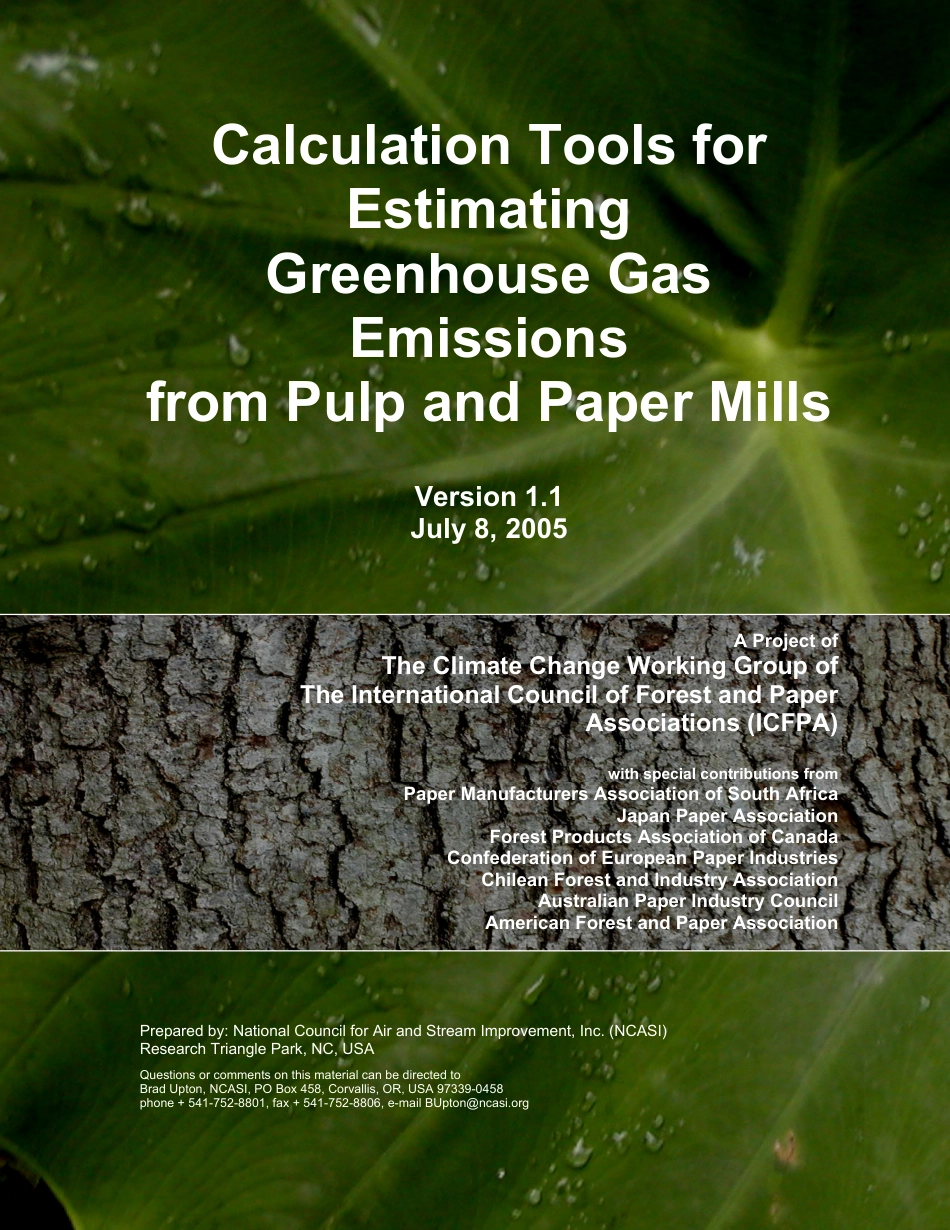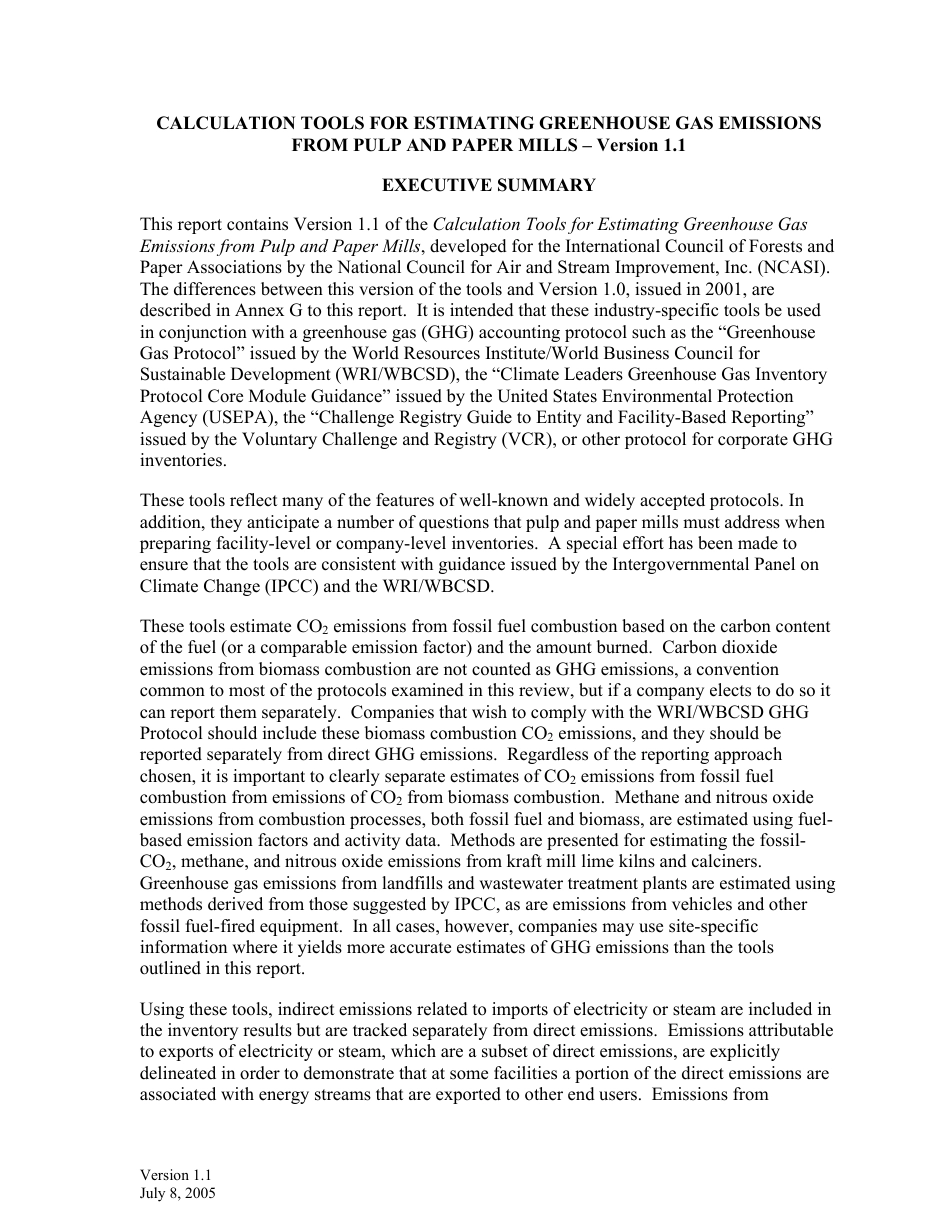Version 1.1 July 8, 2005 Calculation Tools for Estimating Greenhouse Gas Emissions from Pulp and Paper Mills Version 1.1 July 8, 2005 A Project of The Climate Change Working Group of The International Council of Forest and Paper Associations (ICFPA) with special contributions from Paper Manufacturers Association of South Africa Japan Paper Association Forest Products Association of Canada Confederation of European Paper Industries Chilean Forest and Industry Association Australian Paper Industry Council American Forest and Paper Association Prepared by: National Council for Air and Stream Improvement, Inc. (NCASI) Research Triangle Park, NC, USA Questions or comments on this material can be directed to Brad Upton, NCASI, PO Box 458, Corvallis, OR, USA 97339-0458 phone + 541-752-8801, fax + 541-752-8806, e-mail BUpton@ncasi.org Version 1.1 July 8, 2005 This page intentionally blank. Version 1.1 July 8, 2005 CALCULATION TOOLS FOR ESTIMATING GREENHOUSE GAS EMISSIONS FROM PULP AND PAPER MILLS – Version 1.1 EXECUTIVE SUMMARY This report contains Version 1.1 of the Calculation Tools for Estimating Greenhouse Gas Emissions from Pulp and Paper Mills, developed for the International Council of Forests and Paper Associations by the National Council for Air and Stream Improvement, Inc. (NCASI). The differences between this version of the tools and Version 1.0, issued in 2001, are described in Annex G to this report. It is intended that these industry-specific tools be used in conjunction with a greenhouse gas (GHG) accounting protocol such as the “Greenhouse Gas Protocol” issued by the World Resources Institute/World Business Council for Sustainable Development (WRI/WBCSD), the “Climate Leaders Greenhouse Gas Inventory...



